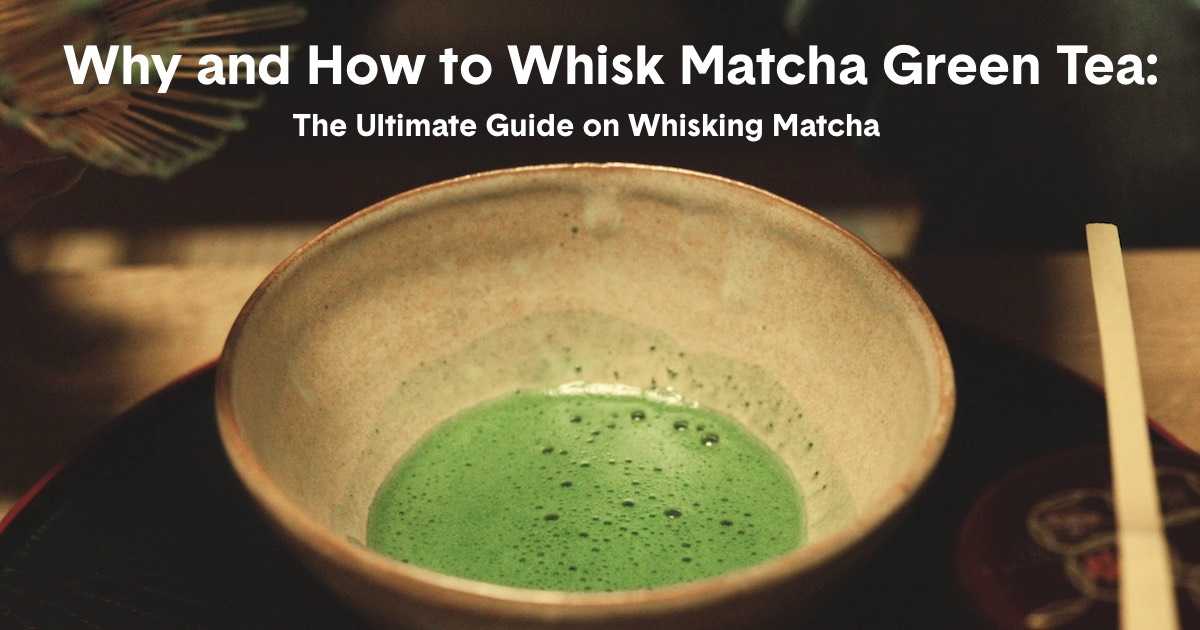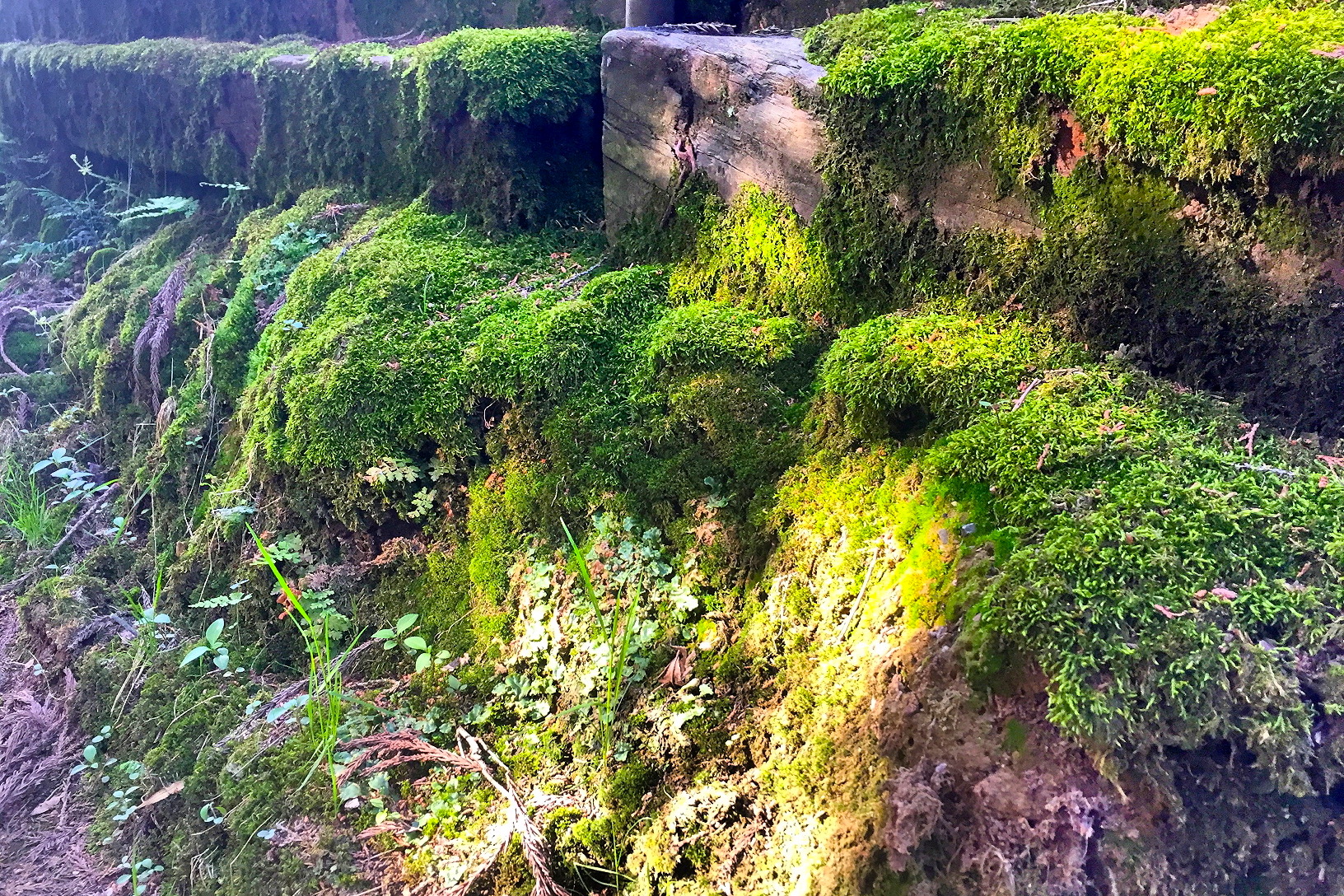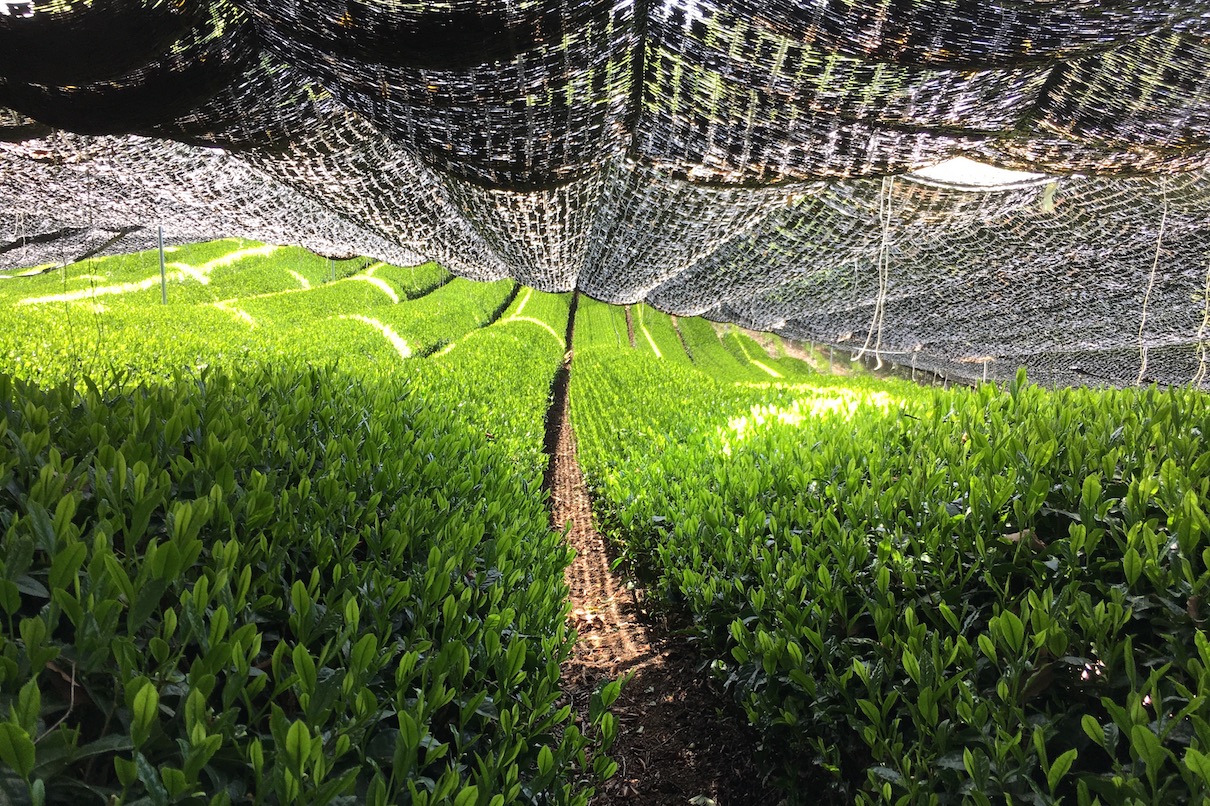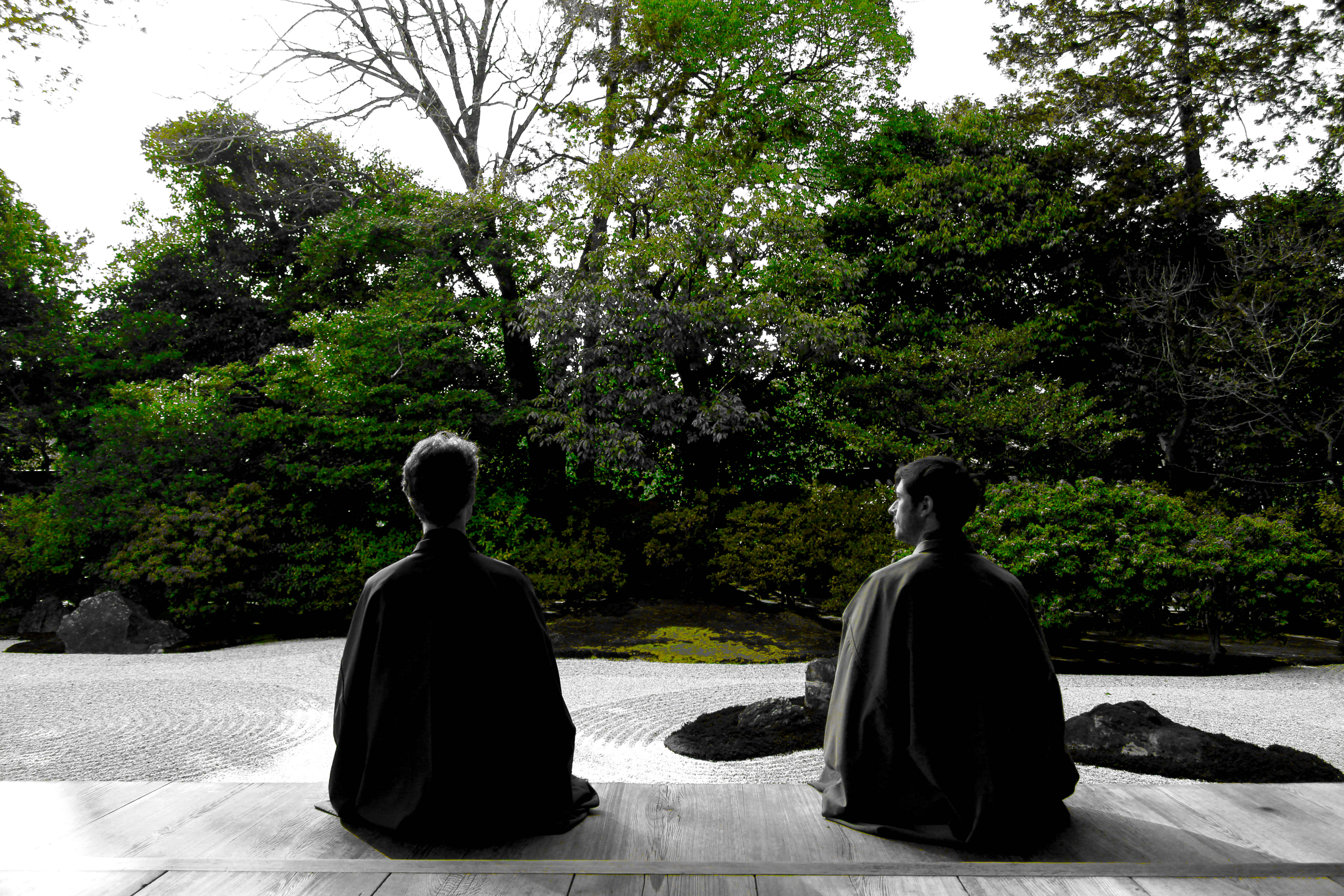Why and How to Whisk Matcha Green Tea: The Ultimate Guide on Whisking Matcha
Why and How to Whisk Matcha Green Tea: The Ultimate Guide on Whisking Matcha
I whisk my matcha.
Yes. Whether pure or when I prepare a latte, before pouring on the milk, I always, always whisk.
Using a Chasen (the Japanese name for a whisk used to prepare matcha green tea) is an absolute no-brainer for me and I have often trouble imagining that people could see things otherwise.
Truth is: as matcha aficionados and longtime Japanese expats, we tend to forget that for many people, whisking matcha is absolutely not an obvious practice.
I am often surprised to hear customers feedback who absolutely ADORE matcha, praise the taste our MMU Matcha blends...but obviously can’t whisk! Imagine if they only knew how to whisk? They would adore it even more 😉
Last year, before launching our infamous Kickstarter, we even went to shoot a movie of our tea-master mentor: we focused on capturing the movement of his hands, and tried to explain how easy it was really to whisk a good matcha:
Even after that, we realized the whole process was still largely misunderstood.
Therefore, and in the so very Japanese ways of everyday Kaizen (“improvement”), let’s talk today about something that will revolutionize your approach to matcha: WHISKING!
Why use a bamboo whisk (chasen)?
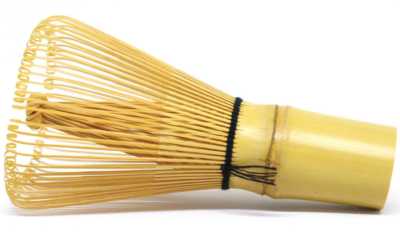 This, is a whisk.
This, is a whisk.
The whisk is the single most important thing after the matcha itself when it comes to preparing a good beverage. It is called “chasen” (茶筅) in Japanese, it is made of bamboo and designed especially to prepare matcha.
This simple and modest tool is very important for several reasons.
The Mix
The whisk allows to mix matcha powder, water, and air into a nice frothy beverage, releasing aromas and essences in the foam on the surface. It is not only about dissolving the powder in water! Oxygenation is key.
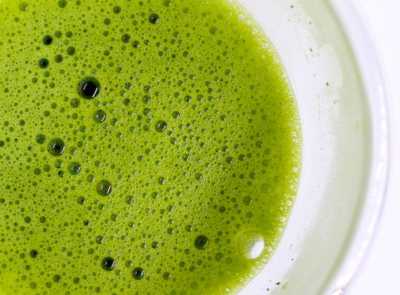
For coffee drinkers: think of this effect as the froth on your espresso or cappuccino.
For wine drinkers: think of it as aeration – wine needs to “breathe” to reveal its full potential.
A word on the material: Bamboo
Bamboo (in a decent whisk) does not leave any taste or smell that would affect the delicate taste of matcha, when an iron whisk usually has an impact on it. Also it is a durable material: if dried in a good way, the chasen can keep its shape and remain efficient for a long time, months or years.
Bamboo makes the whisk highly flexible: instead of piercing/scratching the bowl, it bends and prevents any damage. As bowls used to prepare matcha can be old, precious and expensive, it is an important point. Especially if you make matcha often!
Last but not least : the Experience
The Experience when using a chasen is completely different. This tool has been used for centuries in tea ceremony. Making a Chasen requires time and knowledge. Using a bamboo whisk will make you feel like a tea master for a few minutes every day, and the great part is that you don’t need much knowledge to use it properly!
So in the end, how do you whisk?
How to whisk matcha
Whisking is the key part of making a good and foamy matcha! However from our own experience it is the most misunderstood step. Whisking is not complicated but you have to do it in a certain way to make it work. The whole process should not take more than a minute.
Here are some instructions to help you to obtain a nice foam:
Preparations:
After adding the matcha in your bowl (one or two spoons), add a small amount of cold water (a teaspoon) and work it slowly with the whisk into a lump free paste. That is not yet what we call whisking!
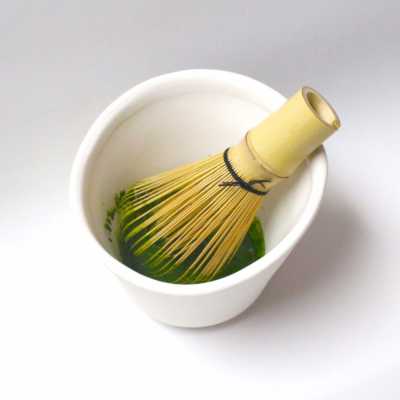
Now that you have a nice, lump free paste in your bowl, there begins the proper whisking:
The Whisking
Add some hot water, and start whisking firmly using your wrist (not the elbow) while you hold the bowl with your other hand. When we say firmly we mean FIRMLY. Don’t be afraid. Give it your best. Be fast! Be dirty! Be energetic! You’ll get the hang of it.
Try to whisk as fast as you possibly can! You can’t be too fast.
You must simply whisk the matcha back and forth, NOT in a circular motion but in a W or zigzag pattern. Or just back and forth. You need to shock the material as you incorporate air to the water and tea, otherwise it will not be foamy.
(Whisking in circles is too smooth and you will not be able to oxygenate your tea = no bubbles)
Keep whisking for at least 20 seconds. Your hand will feel tired and sore but DO NOT STOP.
Did I stress enough that you should whisk firmly? Whisk FIRMLY.
Here is a short video to help you visualize the whole process! You can slow down the video if you want to see the motion more clearly.
(note: as you see, the person whisking here poured the hot water directly on the matcha. We advise to still use a teaspoon of cold water first and work the matcha into a paste in order to get rid of any lumps)
–
Also, an advice: when whisking don’t press the tines hard at the bottom of the bowl: you don’t need to. It’s OK to have some friction but really don’t press unnecessarily hard. We are making tea here, not destroying utensils. Try and whisk the surface of the water.
When you’ve whisked hard for at least 20 seconds (you can do more!), slow down, stop and watch the foam. It should be there if the matcha you use if of good quality – if you use our MMU blends, we guarantee a great foam 😉
If you feel that you want more foam, whisk more. My personal advice here but I often re-whisk my matcha a second time after drinking half. I love to always have a nice deep foam on top!
Checklist:
- Prepare your lump free paste with a bit of cold water.
- Pour hot water.
- Whisk HARD!
- …For 20 seconds at least.
- Whisk back & forth, NOT in a circle.
- If you’re not happy with the foam, whisk more!
There you go!
How to take care of your chasen
Your bamboo whisk is a precious tool. To keep it in a good shape through the uses, you have to take care of it and pay attention to a couple details!
Make it more flexible
Your chasen’s maintenance starts even before making your matcha. Before using it, you can dip it for several seconds in warm water to make the tines a little more flexible. It will prevent them from breaking easily and make you whisk last longer.
Be careful when using it
During the whisking, be sure not to push too much power on your chasen: be firm but gentle when you are using it. Also, as we said before, do not scratch your bowl with it. It will damage both of them!
Clean your chasen
Make sure to clean your whisk after each use. Don’t put in the dishwasher, it would damage it badly. Cleaning it is really simple: just use a bowl of warm water and whisk it as you would with matcha. You can repeat the operation as many times as needed. No need to use soap or anything, hot water will do the job perfectly by itself and it will be more gentle with the bamboo.
Dry it properly
Once cleaned, you need to dry your chasen to protect it from humidity and prevent the apparition of mold. The best thing to keep its shape is to use a whisk holder to make it dry and to store it. However, if you don’t use one, make sure not to dry or store your bamboo whisk on its side: it will lose its shape and efficiency really quickly. You can put it backwards so the tiles are sticking on the air.
Store it in a good place
To store your whisk, do not use the plastic container it came in when you bought it. Chasen shape always changes through the uses, it is perfectly normal. The first container might not fit it anymore after several uses. It might even damage your whisk if you apply too much power when you put it inside.
Also, if your chasen is not perfectly dry, the humidity trapped in the plastic could cause mold. This is also why we recommend you to use a whisk holder.
That’s it!
If you read this article from the start to the end, first of all: congratulations! You are now able to use a chasen properly and to make it last! You are a step closer to enjoying a great matcha 🙂
Joanne Bounin & Etienne Denoual
Why and How to Whisk Matcha Green Tea: The Ultimate Guide on Whisking Matcha
I whisk my matcha.
Yes. Whether pure or when I prepare a latte, before pouring on the milk, I always, always whisk.
Using a Chasen (the Japanese name for a whisk used to prepare matcha green tea) is an absolute no-brainer for me and I have often trouble imagining that people could see things otherwise.
Truth is: as matcha aficionados and longtime Japanese expats, we tend to forget that for many people, whisking matcha is absolutely not an obvious practice.
I am often surprised to hear customers feedback who absolutely ADORE matcha, praise the taste our MMU Matcha blends...but obviously can’t whisk! Imagine if they only knew how to whisk? They would adore it even more 😉
Last year, before launching our infamous Kickstarter, we even went to shoot a movie of our tea-master mentor: we focused on capturing the movement of his hands, and tried to explain how easy it was really to whisk a good matcha:
Even after that, we realized the whole process was still largely misunderstood.
Therefore, and in the so very Japanese ways of everyday Kaizen (“improvement”), let’s talk today about something that will revolutionize your approach to matcha: WHISKING!
Why use a bamboo whisk (chasen)?
 This, is a whisk.
This, is a whisk.
The whisk is the single most important thing after the matcha itself when it comes to preparing a good beverage. It is called “chasen” (茶筅) in Japanese, it is made of bamboo and designed especially to prepare matcha.
This simple and modest tool is very important for several reasons.
The Mix
The whisk allows to mix matcha powder, water, and air into a nice frothy beverage, releasing aromas and essences in the foam on the surface. It is not only about dissolving the powder in water! Oxygenation is key.

For coffee drinkers: think of this effect as the froth on your espresso or cappuccino.
For wine drinkers: think of it as aeration – wine needs to “breathe” to reveal its full potential.
A word on the material: Bamboo
Bamboo (in a decent whisk) does not leave any taste or smell that would affect the delicate taste of matcha, when an iron whisk usually has an impact on it. Also it is a durable material: if dried in a good way, the chasen can keep its shape and remain efficient for a long time, months or years.
Bamboo makes the whisk highly flexible: instead of piercing/scratching the bowl, it bends and prevents any damage. As bowls used to prepare matcha can be old, precious and expensive, it is an important point. Especially if you make matcha often!
Last but not least : the Experience
The Experience when using a chasen is completely different. This tool has been used for centuries in tea ceremony. Making a Chasen requires time and knowledge. Using a bamboo whisk will make you feel like a tea master for a few minutes every day, and the great part is that you don’t need much knowledge to use it properly!
So in the end, how do you whisk?
How to whisk matcha
Whisking is the key part of making a good and foamy matcha! However from our own experience it is the most misunderstood step. Whisking is not complicated but you have to do it in a certain way to make it work. The whole process should not take more than a minute.
Here are some instructions to help you to obtain a nice foam:
Preparations:
After adding the matcha in your bowl (one or two spoons), add a small amount of cold water (a teaspoon) and work it slowly with the whisk into a lump free paste. That is not yet what we call whisking!

Now that you have a nice, lump free paste in your bowl, there begins the proper whisking:
The Whisking
Add some hot water, and start whisking firmly using your wrist (not the elbow) while you hold the bowl with your other hand. When we say firmly we mean FIRMLY. Don’t be afraid. Give it your best. Be fast! Be dirty! Be energetic! You’ll get the hang of it.
Try to whisk as fast as you possibly can! You can’t be too fast.
You must simply whisk the matcha back and forth, NOT in a circular motion but in a W or zigzag pattern. Or just back and forth. You need to shock the material as you incorporate air to the water and tea, otherwise it will not be foamy.
(Whisking in circles is too smooth and you will not be able to oxygenate your tea = no bubbles)
Keep whisking for at least 20 seconds. Your hand will feel tired and sore but DO NOT STOP.
Did I stress enough that you should whisk firmly? Whisk FIRMLY.
Here is a short video to help you visualize the whole process! You can slow down the video if you want to see the motion more clearly.
(note: as you see, the person whisking here poured the hot water directly on the matcha. We advise to still use a teaspoon of cold water first and work the matcha into a paste in order to get rid of any lumps)
–
Also, an advice: when whisking don’t press the tines hard at the bottom of the bowl: you don’t need to. It’s OK to have some friction but really don’t press unnecessarily hard. We are making tea here, not destroying utensils. Try and whisk the surface of the water.
When you’ve whisked hard for at least 20 seconds (you can do more!), slow down, stop and watch the foam. It should be there if the matcha you use if of good quality – if you use our MMU blends, we guarantee a great foam 😉
If you feel that you want more foam, whisk more. My personal advice here but I often re-whisk my matcha a second time after drinking half. I love to always have a nice deep foam on top!
Checklist:
- Prepare your lump free paste with a bit of cold water.
- Pour hot water.
- Whisk HARD!
- …For 20 seconds at least.
- Whisk back & forth, NOT in a circle.
- If you’re not happy with the foam, whisk more!
There you go!
How to take care of your chasen
Your bamboo whisk is a precious tool. To keep it in a good shape through the uses, you have to take care of it and pay attention to a couple details!
Make it more flexible
Your chasen’s maintenance starts even before making your matcha. Before using it, you can dip it for several seconds in warm water to make the tines a little more flexible. It will prevent them from breaking easily and make you whisk last longer.
Be careful when using it
During the whisking, be sure not to push too much power on your chasen: be firm but gentle when you are using it. Also, as we said before, do not scratch your bowl with it. It will damage both of them!
Clean your chasen
Make sure to clean your whisk after each use. Don’t put in the dishwasher, it would damage it badly. Cleaning it is really simple: just use a bowl of warm water and whisk it as you would with matcha. You can repeat the operation as many times as needed. No need to use soap or anything, hot water will do the job perfectly by itself and it will be more gentle with the bamboo.
Dry it properly
Once cleaned, you need to dry your chasen to protect it from humidity and prevent the apparition of mold. The best thing to keep its shape is to use a whisk holder to make it dry and to store it. However, if you don’t use one, make sure not to dry or store your bamboo whisk on its side: it will lose its shape and efficiency really quickly. You can put it backwards so the tiles are sticking on the air.
Store it in a good place
To store your whisk, do not use the plastic container it came in when you bought it. Chasen shape always changes through the uses, it is perfectly normal. The first container might not fit it anymore after several uses. It might even damage your whisk if you apply too much power when you put it inside.
Also, if your chasen is not perfectly dry, the humidity trapped in the plastic could cause mold. This is also why we recommend you to use a whisk holder.
That’s it!
If you read this article from the start to the end, first of all: congratulations! You are now able to use a chasen properly and to make it last! You are a step closer to enjoying a great matcha 🙂
Joanne Bounin & Etienne Denoual
[optin-monster-shortcode id=”tqpjfhsjynk3qqnd2njg”]
